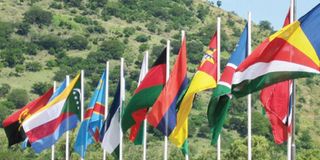SADC SUMMIT 2019: Tracing Sadc roots from Tanzania

Dar es Salaam. “Without unity, there is no future for Africa.” This is one of the famous quotes by Tanzania’s founding President, Mwalimu Julius Kambarage Nyerere, that the Southern African Development Community (Sadc) has lived up to since its establishment in 1992.
And, as the heads of state and government of the 16-member bloc are expected to meet in Dar es Salaam for the 39th summit, the role that Tanzania, and Mwalimu Nyerere in particular, played in the formation of the body becomes even critical and clearer.
The formation of Sadc, was proceeded by the Southern African Development Coordination Conference (Sadcc), which was formed in Lusaka, Zambia on April 1, 1980 with the adoption of the Lusaka Declaration (Southern Africa: Towards Economic Liberation).
The idea of forming Sadcc, a tool of the Frontline States that struggled against racism and dictatorship in the southern African states, was born in Tanzania.
In 1979, Mwalimu Nyerere hosted the leaders of the Frontline States in Arusha, who at the end of their talks, came up with a statement on the birth of a new organisation, Sadcc.
Tanzania’s former permanent secretary, who served in different ministries, Mr Uledi Mussa, said during a training seminar for journalists about Sadc that without the participation and contribution of Tanzania to the liberation struggle of the Southern African Region, Sadc may have not existed.
Uledi says many countries that formed the Frontline States would not have economically and militarily withstood the provocations of the apartheid and the brutality of the government of South Africa without the sincere participation of Tanzania.
According to Mr Uledi, the Frontline States later became well-prepared after the establishment of Sadcc, particularly by being economically independent.
He says the formation of Sadc was not easy. The Frontline States had gone through years of great pain and loses as they fought against apartheid and segregation during the liberation struggle.
The beginning
The regional cooperation began in 1980 as a bloc of the frontline states in Lusaka, Zambia, where leaders of six states including Mwalimu Julius Nyerere, Samora Machel (Mozambique), Robert Mugabe (Zimbabwe) and their host, Kenneth Kaunda, met.
After Namibia attained independence, the leaders met in Windhoek on August 17, 1992, where they decided to change the name of Sadcc to Sadc with some development goals of the region.
Sadc, whose headquarters are located in Gaborone, Botswana, has the goals of developing economic cooperation, integration, politics, defence and security.
Kikwete on Tanzania’s role
The role of Tanzania in Sadc was amplified by former President Jakaya Kikwete during the burial of retired President of South Africa and freedom fighter, Mr Nelson Mandela.
Mr Kikwete was accorded a stunning ovation when he made a speech at Mandela’s funneral as he detailed about how Tanzania contributed immensely to the liberation struggle of the southern African states.
Mr Kikwete told mourners, for instance, that in January, 1962, Mandela sneaked into Tanganyika without a passport and held talks with Mwalimu Nyerere about the struggle for the liberation of South Africa.
Following the talks, Nyerere decided to allocate pieces of land for the liberation fighters of South Africa to set up camps for military activities in the areas of Kongwa (Dodoma), Mgagao (Iringa), Mazimbu and Dakawa (Morogoro).
Through the influence of Nyerere, residents of Kihesa Village, Iringa Region, offered the Mgagao area for the accommodation of the South African freedom fighters.
Among the freedom fighters, who happened to have lived with the late president of South Africa, Nelson Mandela, and his wife, Winnie, is the incumbent President of South Africa, Cyril Ramaphosa, who led the liberation struggle from Kihesa Mgagao.
Kikwete said apart from helping the freedom fighters securing passports, Tanzania was forced to brand them with fake names so that they could carry out their activities without a problem.
Samora trained in Tanzania
Tanzania’s efforts in supporting the freedom fighters did not end in South Africa as the efforts also immeasurably involved the liberation of Mozambique until it gained independence on June 25, 1975 from the Portuguese rulers through war led by Samora Machel.
Mr Machel attended voluntary military training in Dar es Salaam, Tanzania and later was among the fighters of the Frelimo Party, who were sent to Algeria for further military training.
When he returned to Tanzania from Algeria, Machel was chosen to lead the military camp of the Frelimo freedom fighters in Kongwa.
Mr Machel and his soldiers, who fought for independence, set up camp in Tanzania. Nyerere visited them regularly to lay down strategies of attaining independence,
Dr Ayoub Rioba, who was a facilitator in the training for the journalists, says the leaders of the nine states, who met in Lusaka, Zambia, in 1980 had vital philosophies in forming Sadcc.
He mentioned the philosophies as freedom, equality, justice, unity, being independent and that of better social lives.
He says the other importance of the integration is to protect the cultures of the Sadc member states, which, to a large extent, he adds, are likened to stiff porridge eaten by almost all nations, with the difference of names.




